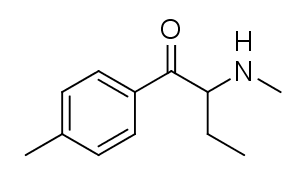Beautiful Plants For Your Interior
Summary
4-Methylbuphedrone, alternatively recognized as 4-MeMABP, BZ-6378, and 4-Methyl-α-methylamino-butyrophenone, is a stimulant substance belonging to the cathinone class. This compound has been made available online and is often marketed as a designer drug.
Its presence was initially reported to the European Monitoring Centre for Drugs and Drug Addiction (EMCDDA) in November 2011.
| Identifiers | |
|---|---|
| IUPAC name | |
| CAS Number | 1336911-98-8 |
|---|---|
| PubChem CID | 71750237 |
| ChemSpider | 26702147 |
| UNII | 4Y78FRB99G |
| CompTox Dashboard (EPA) | DTXSID001014193 |
| Chemical and physical data | |
| Formula | C12H17NO |
| Molar mass | 191.274 g·mol−1 |

Legal status
- In Germany, 4-Methylbuphedrone is classified under Anlage I, making its possession and distribution illegal.
- As of October 2015, 4-MeMABP is categorized as a controlled substance in China.
- In the United States, 4-Methylbuphedrone is designated as a Schedule 1 controlled substance due to its structural similarity as a positional isomer of 4-Methylethcathinone (4-MEC).
FAQ
1. What is 4-methylbuphedrone?
- 4-Methylbuphedrone is a synthetic stimulant drug belonging to the cathinone class. It has been marketed and sold online as a designer drug.
2. What are the effects of 4-methylbuphedrone?
- The effects of 4-methylbuphedrone can include increased energy, alertness, and sometimes a sense of euphoria. However, individual responses to the substance may vary.
3. Is 4-methylbuphedrone legal?
- The legal status of 4-methylbuphedrone varies by country and region. It may be classified as a controlled or illegal substance in some places. It’s essential to check local regulations to determine its legal status.
4. What are the potential health risks associated with 4-methylbuphedrone use?
- Using 4-methylbuphedrone can carry health risks, including an elevated heart rate, anxiety, paranoia, and potential addiction. Since it is relatively new, its long-term effects are not well-documented.
5. Can 4-methylbuphedrone be detected in drug tests?
- 4-Methylbuphedrone may be detectable in specific drug tests, particularly in urine screenings. However, its inclusion in standard drug tests may vary, and specialized tests may be required for accurate detection.
6. Are there any street names for 4-methylbuphedrone?
- Street names for 4-methylbuphedrone may vary by region and may include nicknames or slang terms used within the illicit drug trade.
7. Is 4-methylbuphedrone used for any medical purposes?
- 4-Methylbuphedrone is not approved for any medical use and is primarily encountered as a recreational or illicit substance.
8. What should I do if I suspect someone is using 4-methylbuphedrone?
- If you suspect someone is using 4-methylbuphedrone or any other illicit substance, it’s essential to encourage them to seek professional help. Substance abuse can have severe health and social consequences, and early intervention is crucial.
9. Where can I get more information about 4-methylbuphedrone and its risks?
- For comprehensive information about 4-methylbuphedrone, its associated risks, and harm reduction strategies, consider consulting local substance abuse resources, addiction treatment centers, or medical professionals specializing in addiction and mental health. Additionally, government health agencies often provide information on substance abuse and its consequences.
References
- “4-Methylbuphedrone.” Sourced from Cayman Chemical. Accessed on July 16, 2015.
- Uchiyama N, Matsuda S, Kawamura M, Kikura-Hanajiri R, Goda Y (January 2014). “Discovery of Two Novel Designer Drugs: MT-45 (I-C6), a Piperazine Derivative, and Noopept (GVS-111), a Synthetic Peptide, Alongside Synthetic Cannabinoid A-834735, Cathinone Derivative 4-methoxy-α-PVP, and Phenethylamine Derivative 4-methylbuphedrine in Illicit Products.” Published in Forensic Toxicology. Volume 32, Issue 1, Pages 9–18. DOI: 10.1007/s11419-013-0194-5. S2CID 37259772.
- Uchiyama N, Kawamura M, Kikura-Hanajiri R, Goda Y (April 2013). “URB-754: A Novel Designer Drug and the Identification of 12 Synthetic Cannabinoids in Illicit Products.” Published in Forensic Science International. Volume 227, Issues 1–3, Pages 21–32. DOI: 10.1016/j.forsciint.2012.08.047. PMID 23063179.
- Soussan C, Kjellgren A (September 2014). “Harm Reduction and Knowledge Exchange: A Qualitative Analysis of Drug-Related Internet Discussion Forums.” Published in Harm Reduction Journal. Volume 11, Issue 25, Page 25. DOI: 10.1186/1477-7517-11-25. PMC 4160913. PMID 25200686.
- “关于印发《非药用类麻醉药品和精神药品列管办法》的通知” (in Chinese). Issued by China Food and Drug Administration. Dated September 27, 2015. Archived from the original on October 1, 2015. Retrieved on October 1, 2015.
- “Lists of: Scheduling Actions, Controlled Substances, Regulated Chemicals” (PDF). Published by the U.S. Department of Justice. February 2023. Retrieved on March 5, 2023.